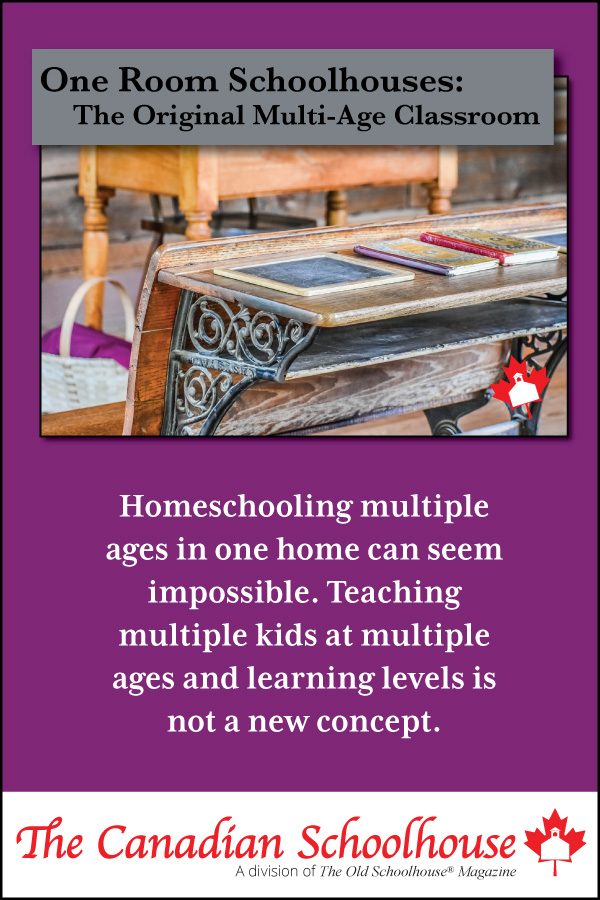

Homeschooling multiple ages in one home can seem impossible. Teaching multiple kids at various ages and learning levels is not a new concept. Homeschooling children of multiple ages is remarkably similar to the one room schoolhouses that were used as recent as the 1950’s in public education and are even still used today in mennonite communities.
The Original Multi-Age Classroom
Location and Usage
Found in small farming towns, the one room schoolhouse became a community hub, a multi-use area. During the schooldays, there was one teacher, one blackboard, and rows of seating. Other times the area was configured to host families for social gatherings and meetings.
Sounds quite a bit like the homes of homeschoolers today. Tables and chairs, desks, couches and floors become our classroom. Each child has their own work to complete with a parent supervising and instructing each child individually. Other times, our home hosts family and friends.
Size
A one room schoolhouse could have anywhere from 8 to 44 children at a time. Even with large families, the number of homeschooled children in one home does not get that high. Can you imagine 44 children of different ages and families in one room learning at the same time?
Subjects
Homeschooling allows us to teach the core curriculum just as they did in the one room schoolhouses, but we also have the privilege of adding in subjects that interest our children. Each child is unique, and their studies can reflect their interests and personality. One room schoolhouses on the other hand were governed by a board of elected individuals, and the board of education set the curriculum for each schoolhouse. What a blessing it is to have more control over the things our children are taught.

Materials
Do your kids pass their books onto siblings or share books for their lessons? In the one room schoolhouse, this was a normal practice. Each child would share books with their classmates to cut back on the cost of education. They would also have one mini blackboard (slate) and a piece of chalk for their lessons. Only on exams and for handwriting assignments would they use a quill pen and paper.
Missed Schooldays
While children in the schoolhouse might miss school for home chores and bad weather, homeschooled children can work at their own pace and schedule. This allows for flexibility without missing the lessons of the day and trying to “catch up.” Add to that the wonderful real world learning they receive on those days off, and it’s easy to see that flexibility of our schedule is truly a blessing.
The one room schoolhouse paved the way for the wonderful education we can now give our children through homeschooling. Learning in a multi-age environment can even give younger students a desire to challenge themselves with things older siblings are learning. Multiple ages in one homeschool can seem daunting, but it is possible and can be a wonderful experience for everyone involved.
The Old Britannia Schoolhouse in Ontario is a “living history” site, and students can still attend “school for a day” there as a field trip to see what it was like attending a one room schoolhouse! What a neat field trip that would be! Perhaps there is still a one room schoolhouse in your area you could go visit. Check out the list here to find one near you. You can even read an e-book about them called Perseverance, Pranks and Pride.
This article has been written by homeschooling staff writers of The Canadian Schoolhouse (TCS). Enjoy more of our content from TCS contributors and staff writers by visiting our Front Door page that has content on our monthly theme and links to all our content sections.














